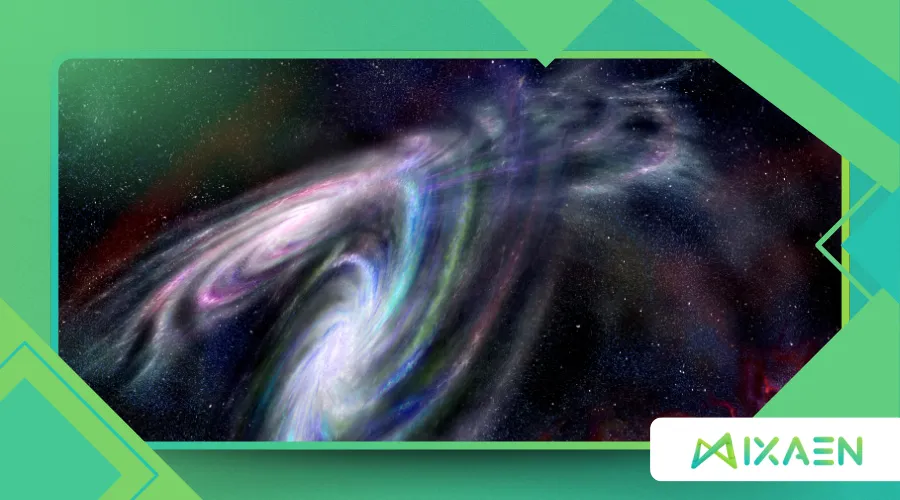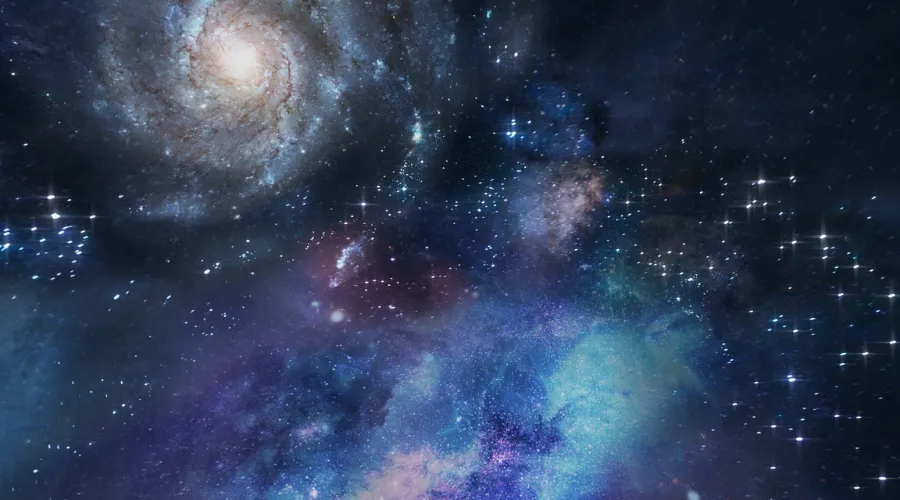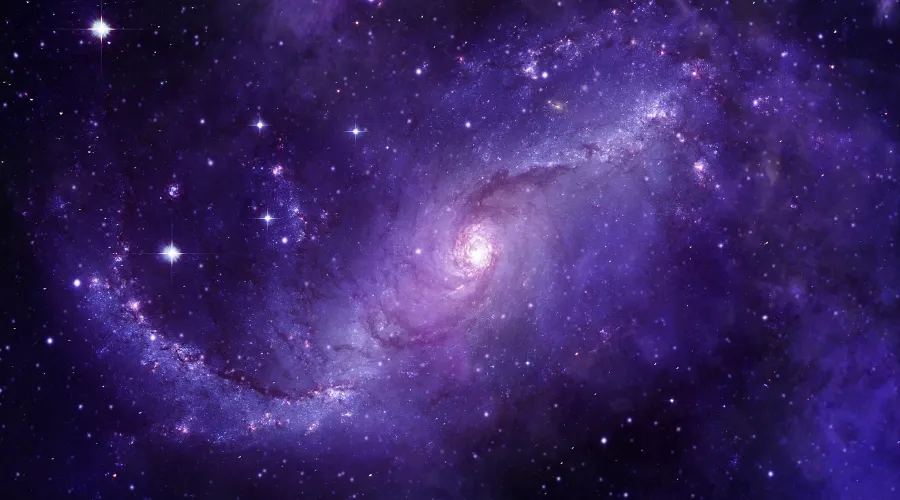When Will the Milky Way Collide with Andromeda? Understanding Galaxy Collisions

Galaxy collisions are among the most spectacular events in the cosmos—violent yet graceful dances that reshape entire universes.
Anúncios
In about 4.5 billion years, our Milky Way will experience this firsthand when it merges with the Andromeda Galaxy.
But what does this mean for stars, planets, and the future of our cosmic neighborhood?
Unlike the chaotic crashes we imagine, galaxy collisions are slow-motion ballets governed by gravity.
Stars rarely collide; instead, they’re flung into new orbits, creating dazzling tidal tails and reshaping galaxies forever.
This process can lead to the formation of new stars and even new planetary systems, as gas and dust are compressed during the collision.
Understanding these cosmic events helps astronomers predict the long-term evolution of galaxies and the universe itself.
The Countdown to Cosmic Fusion
Andromeda, our closest spiral neighbor, is racing toward us at 110 km/s—a speed that would cross the U.S. in under a minute.
Yet, even at this velocity, the collision won’t happen overnight.
NASA’s Hubble Space Telescope confirms the merger will begin in 4.5 billion years, with the final fusion taking another 2 billion.
This means that while the galaxies are on a collision course, there’s still ample time for scientists to study the process and its implications.
Example: Imagine two flocks of birds flying through fog—each bird (a star) avoids direct impact, but their paths intertwine, forming an entirely new flock.
This analogy illustrates how stars will interact without catastrophic collisions, leading to a dynamic reshaping of both galaxies.
The gradual nature of this collision allows researchers to gather invaluable data about galactic dynamics and evolution over time.
What Happens When Galaxies Collide?
Contrary to sci-fi destruction, galaxy collisions are more about transformation than annihilation.
Here’s what science predicts:
+ Measuring the Cosmos: Unlocking the Secrets of Galactic Distances
1. A New Galactic Structure
The Milky Way and Andromeda will likely form a giant elliptical galaxy, nicknamed “Milkdromeda.”
Spiral arms will vanish, replaced by a diffuse, football-shaped glow.
This transformation will not only change the appearance of the galaxies but also their internal dynamics and star formation rates.
The merger will create a new environment for stars to form, potentially leading to bursts of star formation as gas clouds collide and compress.
2. Stars on a Wild Ride
While direct stellar impacts are rare (only a 0.1% chance for any star, per Yale researchers), gravity will sling some into intergalactic space.
Others may get pushed toward the galactic center, feeding supermassive black holes.
Statistic: The merger will boost star formation by 25% before gas depletion halts new births.
This increase in star formation can lead to the creation of massive stars that will eventually explode as supernovae, enriching the surrounding medium with heavy elements.
These elements are essential for the formation of planets and life as we know it, emphasizing the importance of such cosmic events.
3. Earth’s Uncertain Fate
Will our planet survive? Probably—but its future depends on where the Sun ends up.
If ejected into the cosmic void, Earth freezes.
If dragged near the merging black holes, things get… complicated.
The gravitational forces at play could alter the orbits of planets in unpredictable ways, leading to potential instability in the solar system.
As the merger progresses, the night sky may become a canvas of new celestial phenomena, captivating any observers left on Earth.
Understanding these possibilities allows scientists to prepare for a future that is both fascinating and uncertain.

Are Galaxy Collisions Common?
Absolutely.
The universe is a dynamic arena where galaxy collisions shape evolution.
The Hubble Deep Field reveals that 5% of observed galaxies are merging, while 25% show signs of past encounters.
This prevalence of collisions indicates that galaxies are constantly interacting, influencing each other’s evolution and structure.
As galaxies merge, they can trigger waves of star formation and the development of new galactic features, contributing to the overall diversity of the universe.
Table 1: Famous Galactic Mergers
| Galaxies | Stage | Outcome |
|---|---|---|
| Milky Way & Andromeda | Future (4.5 Gyr) | Elliptical “Milkdromeda” |
| Antennae Galaxies | Ongoing | Intense star-forming regions |
| NGC 4038/NGC 4039 | Late-stage | Long tidal tails of gas & stars |
These examples showcase how galaxy collisions are not just isolated events but part of a larger cosmic narrative.
++ Wow! Signal: Scientific Analysis of the Greatest Mystery in Radio Astronomy
Why Don’t Stars Crash?
Space is vast—so vast that even in a galaxy collision, the average distance between stars remains 5 trillion miles.
Instead of smashing, they’re rerouted like cars in a cosmic traffic jam.
This vastness explains why the gravitational effects dominate rather than direct collisions.
Example: Toss two handfuls of sand into the air.
The grains (stars) won’t collide, but their trajectories shift dramatically.
This analogy emphasizes the importance of gravitational interactions over physical impacts in galactic dynamics.
As galaxies collide, the gravitational forces at play can lead to new star formations and the reorganization of existing stars, creating a complex interplay of cosmic forces.

Could Life Survive the Collision?
Perhaps.
Radiation from newborn stars and active black holes poses risks, but life could persist in shielded regions.
The real threat? By then, the Sun may have already rendered Earth uninhabitable.
This highlights the importance of understanding stellar evolution and its impact on planetary systems.
Life, as we know it, may not survive the changing conditions, but the potential for new forms of life could arise in different environments.
Table 2: Timeline of the Milky Way-Andromeda Merger
| Event | Timeframe |
|---|---|
| First close encounter | 4.5 billion years |
| Maximum distortion | 6 billion years |
| Final merger completion | 7 billion years |
This timeline provides a framework for understanding the gradual nature of the merger and its potential consequences for the cosmos.
To learn more about galaxy collisions and their implications, check out NASA’s Galaxy Evolution page.
A Glimpse Into the Cosmic Future
While galaxy collisions seem apocalyptic, they’re engines of creation.
Heavy elements forged in new stars will seed future planets.
Civilizations—if any remain—might witness a sky ablaze with unfamiliar constellations.
This potential for new worlds emphasizes the transformative power of galactic interactions.
Rhetorical Question: If humanity still exists then, will we look up in awe—or flee to distant stars?
This question invites reflection on the resilience of life and our place in the universe.
As we ponder our future, it’s essential to appreciate the beauty and complexity of cosmic events that shape our existence.
Final Thoughts
The Milky Way-Andromeda merger is a reminder that the universe is ever-changing.
Far from destruction, galaxy collisions are rebirths—cosmic symphonies where gravity composes the future.
For now, we watch, calculate, and marvel.
After all, isn’t it thrilling to know our galaxy’s fate is written in the stars?
This resource provides insights into ongoing research and discoveries in the field of astrophysics, helping us understand the grand tapestry of our universe.
